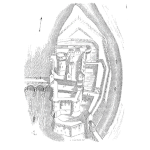
Ballistic setting tools (wireline setting tools) have been used for over sixty years to convey downhole packer devices, including frac plugs, into oil and gas wells. The principle of operation is simple: at setting depth, current sent down the electric line ignites the on-board power charge, which burns and liberates high-pressure gas, which displaces a piston over a fixed distance. This creates the mechanical force used for “setting” the frac plug in casing.

Ballistic setting tools have two missions. The 1st is to apply force to set the frac plug (~10 seconds +). The 2nd is to apply a higher force to disconnect from the frac plug through a tension or shear connection. After retrieval from the well, the high-pressure gas is bled off (some auto-bleed downhole), and the tool is serviced. Thus, a setting tool’s reliability is a function of its configuration and servicing (human factors) between runs into the well.
Three ballistic setting tool configurations are commercially available today. One is known as the Baker style, another is the Owens style, and the third is a disposable-recyclable product. The components in these tools must resist the high mechanical forces generated (greater than 60,000 lbs.), contain the high-pressure gas, work at hydrostatic pressures up to 20,000 psia, resist alternating collapse and burst pressures, operate routinely between ~0 ºF and ~350 ºF, be insensitive to large thermal cycles (power charges generate heat), enable safe pressure relief, and tolerate field disassembly and assembly. The materials used are typically AISI 4100 series carbon steels (Sy min = 110 ksi), and the rubber seals are typically nitrile compounds.
As stated in The Plug and Perf Process, frac plug reliability also depends on the reliability of the power charge. Power charges vary in chemistry and temperature ratings. The burn rate of a given power charge also increases as temperature at setting depth increases. The faster the burn rate, the faster the ballistic setting tool tries to set the frac plug. Conversely, frac plugs and packer devices generally respond best to slower setting. Most setting tools accept a variety of brands and styles of power charges. Thus, power charge and ballistic setting tool selection must be correct for the application and the frac plug selected. For an OEM, this is a system integration and system reliability challenge.
TRUTH: Frac plug reliability depends on ballistic setting tool and power charge reliability.
This is the 3rd in a series of five articles on why Frac Plugs fail in Plug and Perf applications.
 Ask a question or send along a comment.
Please login to view and use the contact form.
Ask a question or send along a comment.
Please login to view and use the contact form.
Leave a Reply